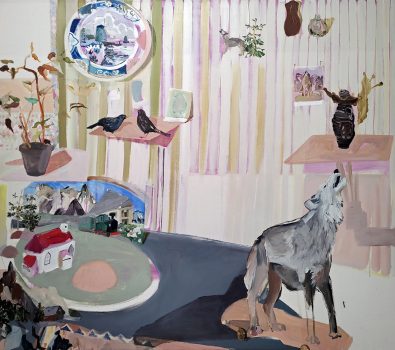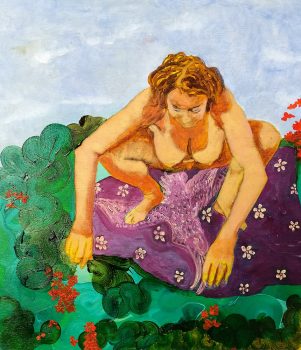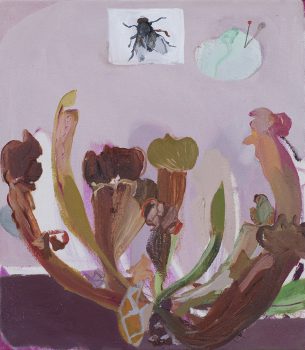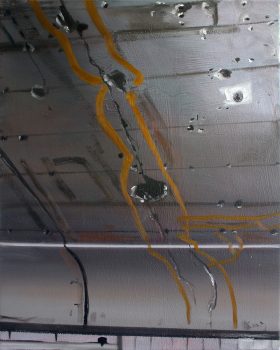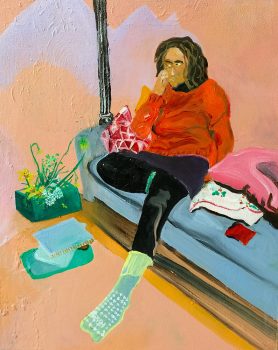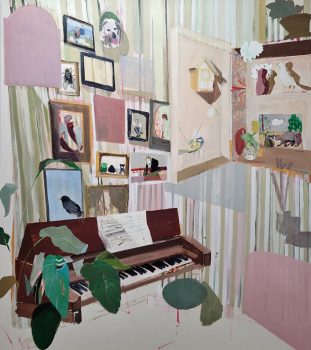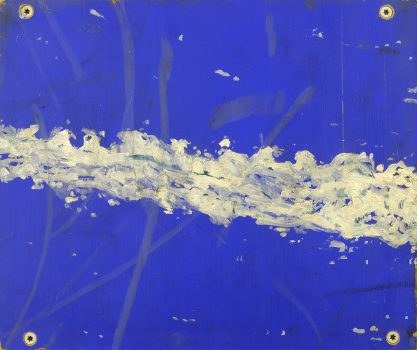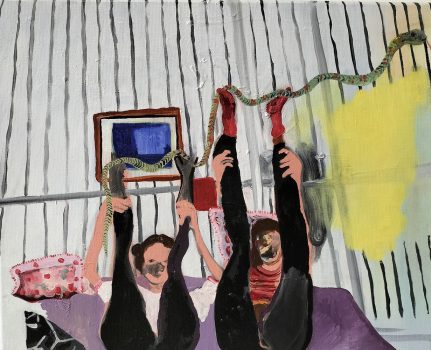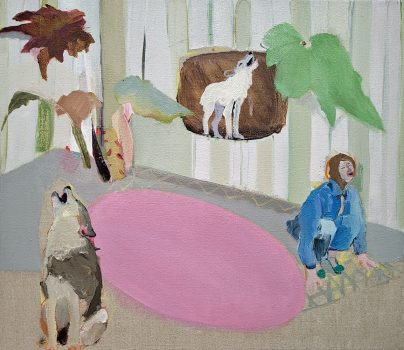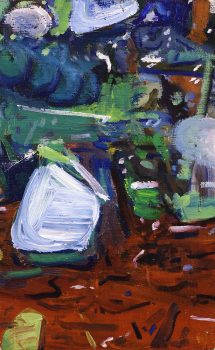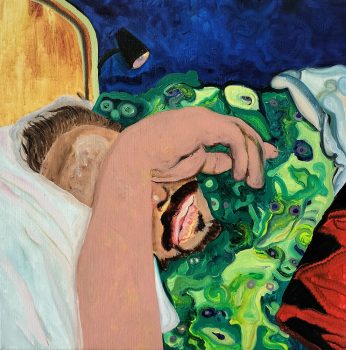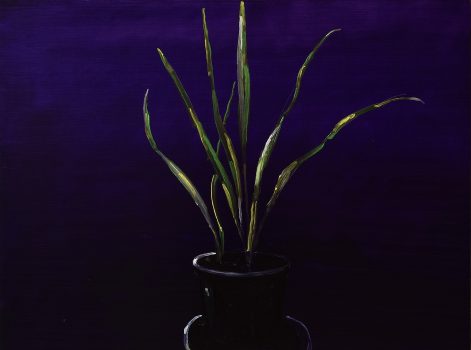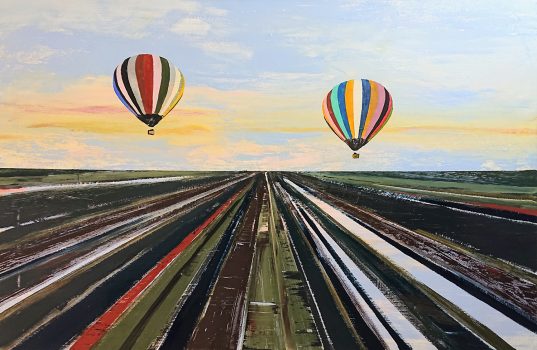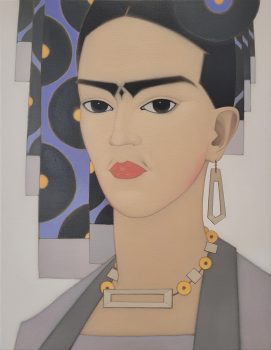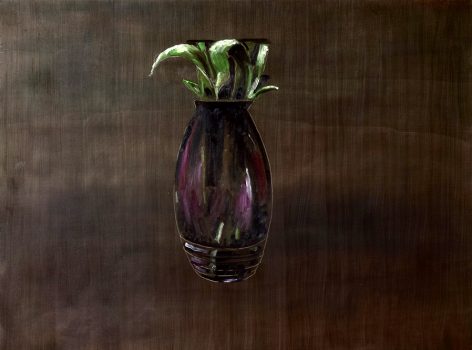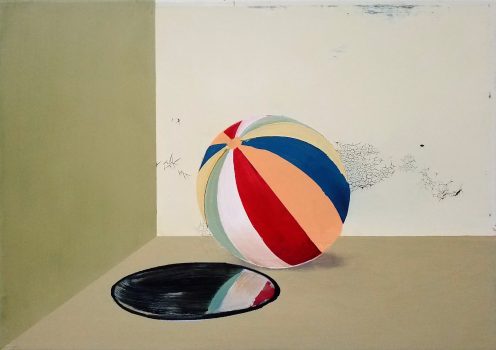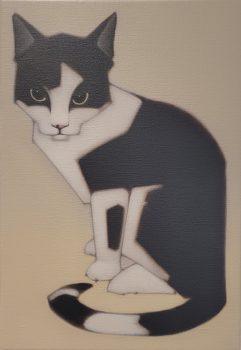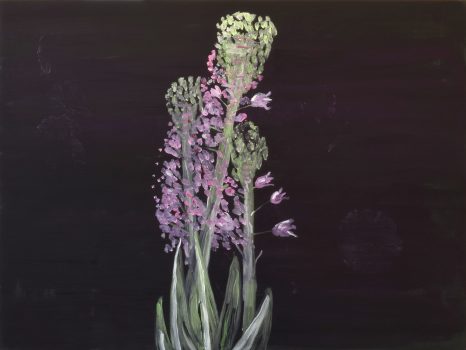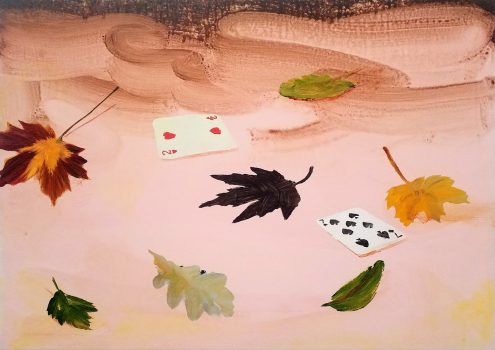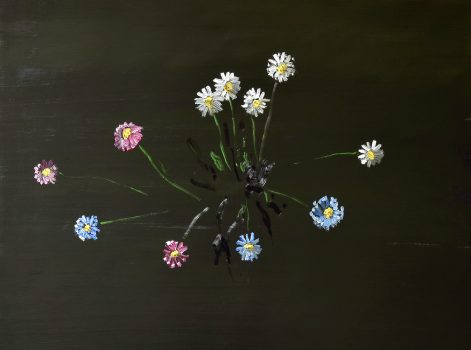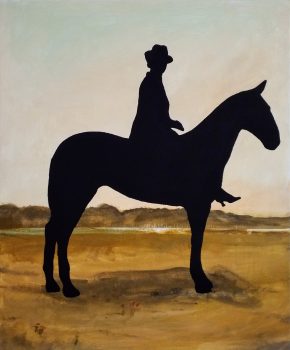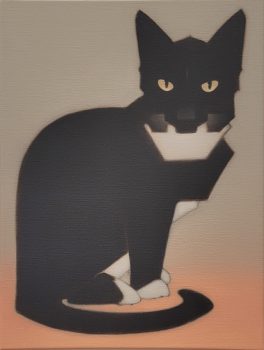Peinture Fraîche
Andrea Freckmann, Tobias Lengkeek
Lotte van Lieshout, Erik Pape
Ronald Versloot, Peter Vos
paintings
12 March – 16 April 2023
Peinture Fraîche (literally: just painted) shows work by six painters of different generations. Erik Pape (1942) devoted his work almost exclusively to Paris until 2020. With the eyes of an outsider and a connoisseur, he gave places such as the Canal St. Martin, Sacré Coeur, Pont Neuf and then Place Stalingrad a new representation in order to master the cliché in it. In his recent work he chooses to depict simple things close to home such as a vase, plant or utensils against a monochrome background. Because of their simplicity, they are radical works in which painting is reduced to its bare essentials.
Lotte van Lieshout (1978) and Andrea Freckmann (1970) also focus on the daily environment and their own lives. Lotte van Lieshout often literally exposes herself to examine her relationship to the world. For example, she paints herself naked, crouching above reflective water or above an image of a mythical bird to reflect on her identity and origin.
In the series Requisiten und andere Ideeen (Props and Other Ideas) Andrea Freckmann paints furniture, objects, houseplants and animals, things from the interior of her house, precious and dear. Yet there is also room for small drama, the carnivorous plant can slowly digest a fly and the dog may burst out into howling. The small paintings on the wall are often quotes from previous works, so that you can read back her oeuvre in miniature.
Tobias Lengkeek (1991) paints buildings and objects that are in a state of decay or decomposition. Once they were new and intact, by painting them he wants to capture the time that lies between their origin and their current state. Lengkeek also extends his paintings to the three dimensional by mounting them on a skate ramp or building geometric figures with them. For example, he shows a flattened octagon constructed from paintings on wood.
Peter Vos (1975) developed a virtuoso way of painting in which he depicts animals and people in a stylized way. He shows a number of portraits of cats on which you unwittingly project human characteristics. In two recent works he translates the portrait of Frida Kahlo into his style of painting, which gives her well-known face an even more iconic effect.
Ronald Versloot (1964) likes to play with the conventions of painting and the conditioning of our perception. Like a modeller, he places apartment buildings on a platform that make them seem tiny, abstract ellipses become ponds in a landscape and the stripes on hot air balloons are repeated in the fields below. As a result, your eye goes back and forth between the illusion of space and the reality of the flat surface of the painting.

